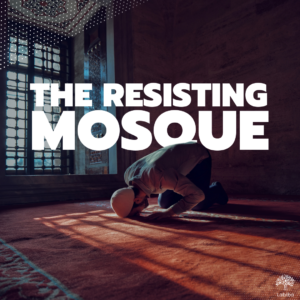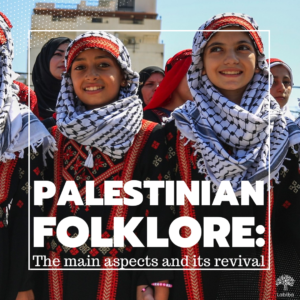By Ekaterina Kuleshina
Rafah, a city straddling the border between Egypt and the Gaza Strip, holds significant strategic, cultural, and humanitarian importance. Known for its bustling border crossing, it serves as a crucial gateway for goods and people between Gaza and the outside world.
Historical Background and Geopolitical Significance
Rafah has ancient roots, dating back to the time of the Pharaohs, when it served as a key outpost in the region. Historically, it has been a site of strategic military importance due to its location on the coastal route between Africa and Asia. Rafah’s contemporary significance largely stems from its position at the Gaza-Egypt border. The Rafah Border Crossing is the only land crossing between Egypt and Gaza not controlled by Israel, making it a vital lifeline for the Palestinian territory.
The border has been a focal point of Israeli-Egyptian and Israeli-Palestinian relations. Following the Israeli withdrawal from Gaza in 2005, control over the crossing became a contentious issue. It has been periodically closed and reopened depending on the political climate, security concerns, and international negotiations.
Rafah Before the War: A Snapshot of Daily Life and Challenges
Rafah’s residents led lives shaped by their close-knit community and traditional Palestinian culture. The city’s social fabric was tightly woven, with families and neighbourhoods playing a crucial role in daily life. Markets and local businesses formed the backbone of Rafah’s economy. The main market was a bustling centre where vendors sold fresh produce, textiles, and household goods. Cafes and social clubs provided spaces for community gatherings, where people discussed local news and shared stories over cups of strong Arabic coffee. Economic conditions in Rafah were challenging, largely due to the blockade imposed by Israel since 2007. This blockade severely restricted the flow of goods and people, impacting local businesses and employment opportunities.
Smuggling tunnels under the Rafah border became a vital, albeit unofficial, economic channel. These tunnels provided a means to bring in essential goods, such as food, medicine, and fuel. This underground economy posed significant risks and was subject to periodic crackdowns by both Egyptian and Israeli authorities.
Humanitarian conditions in Rafah before the war were already precarious. The blockade and limited access to essential services led to high levels of poverty and unemployment. Infrastructure, including healthcare and education, was under constant strain. Water and electricity shortages were a daily reality. These challenges were compounded by the high population density, especially in the refugee camps where many residents of Rafah lived.
Despite the hardships, Rafah was a city rich in cultural heritage. Traditional Palestinian music, dance, and cuisine were integral parts of life. Cultural centres and schools played crucial roles in preserving and promoting this heritage. Festivals and community events provided moments of joy and cultural expression, offering a respite from the daily struggles. Local NGOs and international organisations often supported such initiatives, providing resources and platforms for young people to develop their talents and skills.
The Situation in Rafah After October 7, 2023
After October 7, 2023 Rafah has become a critical focal point in the humanitarian crisis engulfing Gaza. The Rafah border crossing has seen intermittent openings for humanitarian aid convoys. The first aid convoy since the outbreak of hostilities arrived on October 21, 2023, carrying essential supplies such as food, water, and medical aid. However, the quantity was insufficient for Gaza’s 2.3 million residents.
The actions of Israel has led to massive displacement within Gaza, with an estimated 700,000 people fleeing from the northern parts of the enclave to the south, including Rafah. This influx has strained the already limited resources and infrastructure, creating dire conditions for the displaced population.The ongoing bombardment has heavily damaged infrastructure in Rafah and other parts of Gaza. Many hospitals and healthcare facilities have been destroyed or are operating at minimal capacity, lacking essential medicines, equipment, and even basic utilities like water and electricity.
The Situation in Rafah at the End of May 2024
At the end of May 2024, Rafah faced severe devastation and a humanitarian crisis due to ongoing Israeli military operations. One of the deadliest incidents occurred on May 27th, when an airstrike killed at least 45 displaced Palestinians in a refugee camp near Rafah. The UN reported that over a million Palestinians had fled their homes since the offensive began, many seeking refuge in Rafah. Additionally, the International Court of Justice (ICJ) issued provisional measures ordering Israel to halt its military operations in Rafah and to allow aid deliveries. However, the continued shelling and airstrikes persisted, further endangering civilians and hindering relief efforts.
Conclusions
Rafah stands at the intersection of conflict and culture, embodying both the struggles and the spirit of the Palestinian people. Its strategic importance, combined with the ongoing humanitarian challenges, makes it a critical area of focus for anyone seeking to understand the complexities of the Israeli-Palestinian conflict and the broader Middle Eastern geopolitical landscape.
The situation in Rafah remains critical and a poignant reminder of the human cost of conflict. The ongoing violence and humanitarian crisis in Rafah highlight the urgent need for a ceasefire and increased international efforts to provide relief and ensure the safety and dignity of the affected populations.




